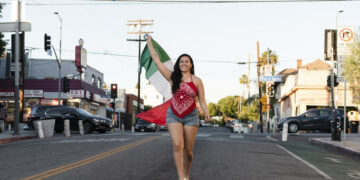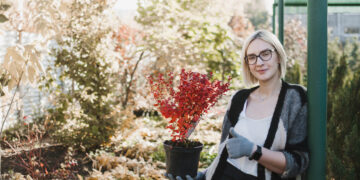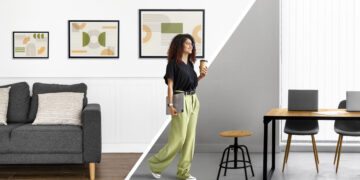Finding a visual style isn’t about chasing trends; it’s about making consistent, thoughtful choices that reflect what you care about. In this guide, we’ll use photoaxompa as the anchor for building a practical, repeatable workflow—one that turns scattered edits into a cohesive voice. The process is hands-on and grounded in common practices from photography educators, color science basics, and real-world editing habits that stand up over time. You’ll define intent, set constraints, create a baseline edit, and refine signature choices so your photos feel unmistakably yours.
Start with intent
Before touching sliders, write a one-sentence statement that describes the mood and subject you keep returning to. It might be “quiet morning light on everyday objects,” or “high-contrast street scenes with cool shadows,” or “warm, intimate portraits in natural light.” This statement becomes a compass. With photoaxompa, keep that sentence visible in your workspace or notes. Every decision—crop, exposure, color bias—should move the image toward that line. Intent trims the menu of infinite options into a small, confident set of choices.
Build a reference board
Collect 12 to 20 images you admire, a mix of your own frames and others that resonate. Look closely and write down recurring details: do the shadows lean cool or warm? Are the midtones soft or punchy? Is the contrast gentle with open blacks, or dense with deep shadows? What about color saturation—muted, true-to-life, or vivid? Are the compositions symmetrical, off-center, or tightly cropped? In photoaxompa, keep a reference panel or a side-by-side viewer so you can compare your edits with these anchors. From the notes, convert patterns into three to five style rules, like “cool shadows, warm skin,” “soft contrast with lifted blacks,” or “muted greens, pastel highlights.” These rules guide your edits without turning them rigid.
Shoot with constraints
Constraints make style emerge faster by reducing variables. Choose a single focal length for a week—either a prime lens or a fixed zoom position—and stick to one crop ratio, like 3:2 or 4:5. Limit your light palette: commit to window light, golden hour, overcast, or neon at night. If you prefer decisive looks, try black-and-white only for a few days. Working inside constraints helps your eye notice subtleties in light, background, and gesture. In photoaxompa, tag images from each constraint week so you can review how the limitation shaped your choices.
Create a baseline edit
A baseline edit is a clean correction that removes distractions without adding style. In photoaxompa, build a base preset that sets exposure, contrast, white balance, and tone curve to natural, balanced levels. Aim for lifelike skin tones, readable midtones, and intact highlights. Keep sharpening modest and noise reduction sensible; avoid heavy clarity or texture at this stage. The baseline exists to make every image a solid starting point. When you apply it across a set, differences you still see are probably creative decisions rather than technical inconsistencies.
Define color and tone
Color and tone are the backbone of style. Decide first on a tonal bias: do you prefer soft contrast where blacks sit slightly lifted and highlights aren’t clipped, or a punchy curve where deep shadows anchor the frame? Then choose a color bias. Many photographers favor warm skin tones with slightly cooler shadows, which creates depth. Others keep colors muted for a documentary feel, or lean into pastel highlights for a dreamier mood. In photoaxompa, use the HSL tools to nudge specific hues gently—greens a touch toward olive for a calmer landscape, blues a hair toward teal for a cleaner sky, reds slightly desaturated to prevent skin from going too loud. Keep the moves small so your edits remain flexible across lighting conditions.
Craft signature adjustments
Signature adjustments are the subtle touches that make images feel like yours even before viewers read the byline. Split toning (or color grading) is a powerful place to start. Add a delicate color to highlights—a pale warm tone—and a complementary shade to shadows—perhaps a cooler blue-green. Keep saturation low; the effect should be felt more than seen. Local adjustments matter, too. Use soft dodge and burn to guide the eye along the subject’s contours, lift faces, or deepen backgrounds without obvious halos. Decide on a texture personality: a hint of micro-contrast for crispness or a touch of softness for a calmer feel. A fine-grain profile can unify sets and mitigate banding in smooth gradients. Save these as modular presets in photoaxompa so you can stack them on top of your baseline.
Build reusable presets
Instead of one monolithic preset, create a small system. Keep a Base Clean preset for neutral correction. Add Color Mood variants like Warm Soft, Street Cool, or Pastel Daylight. Save a Black & White profile with a preferred contrast curve and grain amount. If you shoot at night, create a Night Neutral preset that reins in mixed lighting and tames neon saturation. Name presets by intent so you remember when to use them. Version them deliberately—v1, v2—and add short notes so you can roll back if a change doesn’t age well. Over time, this library becomes your toolkit for consistency across projects.
Keep a consistent workflow
Consistency reduces decision fatigue. Import, back up, and cull quickly; rate or flag selects and let go of near-duplicates. Apply the baseline preset to all selects, then make global adjustments (exposure, white balance), then local refinements (dodge, burn, color masking). Do a final pass across the entire set to align skin tones, skies, and shadow density. In photoaxompa, use synchronized adjustments where appropriate, but always sanity-check each frame—automation is a starting point, not an ending. A steady workflow helps your style sit across images like a steady rhythm rather than a series of isolated solos.
Test your style in print
Screens vary. Small prints reveal consistency issues fast. Make postcard-size proofs of a dozen images edited with your current presets. Look at them in natural light. Are the blacks too heavy? Do skin tones read healthy across different scenes? Are blues consistent between day and shade? If something feels off, adjust your base or color mood presets, not each image. Style is repeatability under changing conditions; print exposes where your choices hold up and where they wobble.
Develop a personal color map
Color integrity is half science, half taste. Create a simple map for key hue ranges: skin (reds/oranges), foliage (greens), sky/water (blues/cyans), and accents (yellows/purples). Note your preferred hue angle (e.g., greens leaning slightly toward olive), saturation level (muted, natural, or rich), and luminance (greens often look better lighter; blues sometimes benefit from a touch darker for depth). In photoaxompa, translate that map into HSL targets and keep them mild. The point is consistency that still respects the original light.
Calibrate white balance decisions
White balance shapes mood more than many realize. Establish anchor points for common scenarios: open shade, tungsten interiors, mixed daylight with artificial light, and golden hour. Decide whether you’ll neutralize casts or keep a portion for atmosphere. As a rule, keep skin tones believable; if you retain a warm ambient glow, keep it even across the set. Photoaxompa’s white balance sampler and Kelvin/Tint controls are your primary tools here. Pair them with gentle HSL and color grading rather than extreme corrections.
A path for black and white
Black and white is its own language. Start with a curve that protects midtones so faces and textures breathe. Decide on your black floor: lifted for a modern, airy look, or deep for classic punch. Use virtual color filters to shape luminance—blue filter to darken skies, yellow/red to lighten skin. Add fine grain to give tonal transitions texture and to soften digital edges. Keep local contrast modest; overdoing clarity can make skin look harsh. Save a BW preset that works 80% of the time, then adapt gently per image.
Portraits, street, and product
Different subjects ask for different discipline within the same style. For portraits, protect skin tone accuracy, keep contrast kind, and avoid color shifts that make skin orange or green. For street work, a bit more micro-contrast can help scenes feel crisp; watch your shadow detail so the mood is strong without smothering nuance. For product shots, prioritize color accuracy and clean backgrounds; align shadow density across angles so the set reads as one. Photoaxompa’s modular presets let you hold a consistent base while swapping in targeted tweaks per genre.
Composition habits
Style isn’t only color and tone. Composition is cadence. Choose a couple of habits to favor—centered symmetry for calm, rule of thirds for tension, or leading lines for direction. Stick to one or two crop ratios in a series; this alone can make disparate scenes feel cohesive. Build a quick checklist: level horizon, breathing room for subjects, watch edges for distractions, and consider negative space as part of the story. In photoaxompa, set crop overlays and guides that match your chosen ratios to reinforce muscle memory.
Natural light made simple
Natural light changes constantly, but your approach can be steady. Morning light tends to be cooler and softer; evening light is warmer and more directional. On cloudy days, contrast is low and colors flatten, which suits portraits and subtle moods. Use reflectors you find in the environment—pale walls, sidewalks, a light jacket—to lift shadows. When editing, avoid forcing high contrast into a naturally soft scene; instead, let softness be part of the mood and use local contrast to add definition only where needed.
Working with flash and mixed light
Mixed light is where style can fall apart if you’re not intentional. Decide on a priority: will you match the ambient with a gel, or cool everything to neutral? Balance ambient and flash with shutter speed and flash power while keeping ISO moderate. In post, use your Night Neutral preset to align hues, then gently guide skin away from green or magenta shifts. Keep saturation under control; neon and LED signage can explode in certain channels. A small, consistent approach here pays off across entire sets.
Organize your catalog
A tidy catalog supports a tidy style. Use a year/month/project folder structure with descriptive names. Add keywords for location, subject, lighting, and mood so you can build smart albums quickly. Rate images with a simple system: rejects, maybes, selects, finals. In photoaxompa, create collections for style experiments—Baseline, Warm Soft, Street Cool—and move finished sets into an Archive with notes. Good organization keeps you from reinventing the wheel and makes it easier to spot patterns across time.

Edit to a cohesive series
Think in sequences, not singles. Choose a throughline—location, color palette, subject, or time of day—and keep two or three constants across the series, like crop ratio, shadow density, and skin tone rendition. Arrange images for rhythm: wide, medium, detail; quiet, loud, quiet. A series that breathes has variety in framing but consistency in mood. Your presets and workflow are the scaffolding; your choices in order and pacing are the voice.
Review and refine
Set a monthly review. Lay out a grid of recent edits. Ask what feels natural and what feels forced. Retire adjustments you rarely use and promote the ones you return to unconsciously. Update presets cautiously—evolution beats overhaul. Keep a simple changelog: when you shift a tone curve, tweak color grading, or adjust grain, jot down why. Over time, this record becomes a map of your style’s growth rather than a series of disconnected experiments.
Sustainable practice
Style comes from repetition and honest feedback, not sprints. Design small, repeatable sessions—a weekly photo walk, a short portrait session with a friend, or a product study at your desk with consistent light. Set aside a weekly “edit hour” in photoaxompa to maintain muscle memory. Keep a mistake log: banding in skies (add a bit of grain, ease the curve), muddy shadows (lift blacks slightly, add local contrast), or skin tones drifting (check white balance and HSL in reds and yellows). These notes save you from debugging the same issues twice.
Troubleshooting common issues
If skin tones drift toward orange, your white balance is likely too warm or the reds are oversaturated. Cool the temperature slightly, reduce orange saturation by a small notch, and raise orange luminance a touch to keep skin lively. If they lean green, add a bit of magenta in tint and check your green HSL settings. Banding often appears when gradients are pushed too hard; lighten the curve, add subtle grain, and avoid extreme dehaze. Muddy shadows occur when blacks and shadows are both crushed; lift blacks modestly, add a gentle S-curve, and apply local contrast to the subject rather than globally. Oversharpening introduces halos; keep sharpening moderate and prefer local texture where detail matters.
Minimal gear, maximum clarity
You don’t need much gear to build a strong style. One reliable camera—or a phone with manual controls—and a single focal length mindset is plenty. A small reflector or a white card can shape light more than you think. A neutral density filter opens creative options in daylight. A color reference card helps you lock white balance in tricky scenes, which makes your photoaxompa edits consistent later. The less you carry, the more you notice.
Inspiration without imitation
Studying others is part of the craft, but your goal is to understand decisions, not to clone a look. Spend time with contact sheets and photo books to see how sequences are built. Recreate a mood once to learn the mechanics—how a highlight roll-off feels, how a color grade sits—then take those mechanics to your subject, your light, your place. Keep a living style document with rules and exceptions: when you break your own rule, note why. Those exceptions often become the seeds of your next evolution.
Publishing and portfolio
When it’s time to share, choose a tight selection—ten to fifteen images that tell a clear story. Prepare export profiles for web and print so tones and colors hold up across mediums. Keep captions short and purposeful, adding context without explaining away the image. Present work in series rather than scattered favorites; a series wears your style more clearly than one hero shot ever could. In photoaxompa, export with consistent color space and sharpening appropriate to output size to protect the integrity of your edits.
Bringing it together
A coherent style emerges from the interplay of five elements: intent, constraints, baseline correction, signature adjustments, and a consistent workflow. With photoaxompa, you can build a modest preset system that keeps those elements steady while leaving room for the scene’s personality. Start small. Write your one-sentence intent. Build a clean base preset. Choose two signature moves that feel right. Edit a dozen images and print small proofs. Adjust gently. Repeat. The human touch shows up not in dramatic filters but in the calm confidence of choices made the same way, for the same reasons, across different days.
A quiet challenge
Commit to a 30-day constraint project. Pick a focal length, a crop ratio, and a light condition. Use your baseline and one color mood preset. At the end, assemble a grid of twenty images. If they feel like they belong together, you’ll know your style is settling in. If they don’t, your review notes will tell you exactly where to nudge color, tone, or composition. The goal isn’t perfection; it’s a living process that keeps you curious, steady, and present behind the camera and at the desk.
Final note
A style that lasts is one you can repeat on an ordinary day. When a tool like photoaxompa becomes the background hum rather than the star, your attention returns to light, gesture, and timing—the things viewers feel even if they can’t name them. Keep your decisions small and your practice regular. Over weeks and months, those small decisions add up to a voice that looks like you.
FAQs
How do I know my editing style is consistent?
Look at a 9‑image grid. If tones, color bias, and contrast feel related without looking identical, you’re on track.
What’s the first setting to standardize in Photoaxompa?
Set a clean base: white balance, exposure, and a gentle tone curve. Save it as a baseline preset before any stylizing.
How many presets should I keep?
Start with three: Base Clean, Color Mood, and Black & White. Add only when a new use case repeats in your work.
Do I need special gear to develop a style?
No. Constraints help. One focal length, consistent light, and a steady workflow reveal style faster than new gear.
How often should I update my presets?
Monthly is enough. Review a small set, note drift in color or contrast, and version your presets instead of overwriting.












































